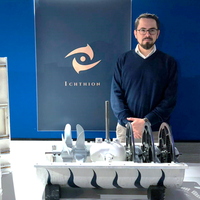Energy & sustainability
William Woodford
Finding the materials for the next generation of grid-scale batteries.

China
Jingshan Luo
Using solar energy to convert water and carbon dioxide into fuels and chemicals with high efficiency and low cost

MENA
Derya Baran
Created the “iyris” innovation which allows any window to become a solar cell.

Latin America
Inty Grønneberg
Plastic pollution has a new enemy: turbines capable of collecting up to 80 tons of plastic a day in rivers

Global
Huanping Zhou
Her innovations could make better, cheaper alternatives to silicon solar cells.
